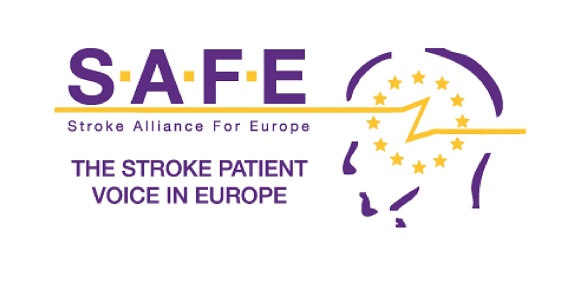From time to time, we like to put the spotlight on one of our members. Today, we are delighted to catch up with SAFE, the Stroke Alliance for Europe, who recently joined EPF.
What’s on the top of your agenda?
SAFE is a non-profit-making organisation that represents a range of stroke patient groups from across Europe. SAFE wants to drive stroke and the response to it up the European political agenda and see growth in activity and strength of Stroke Support Organisations in each country.
Why does your organisation exist?
The European Parliament in June 2003 addressed the urgency of tackling the prevention of stroke at EU level to avoid unnecessary deaths and disability in an important workshop. The conclusion was that European governments must act to prevent stroke without delay and a 10-point action plan was drafted. In this 10-point action plan a key goal was to set up a European Patient Group for Stroke. This led to 6 patient groups forming SAFE, the Stroke Alliance For Europe in October 2004, since then we have grown the number of organisations to the current 34 members.
What is your biggest achievement as an organisation?
Since we were formed, 14 years ago. SAFE is now an alliance of stroke support organisations from over 30 European countries. It has taken a lot of time to develop respect from the medics but we are actively cooperating with the largest organisation of stroke professionals, ESO, after signing a Memorandum of Understanding in 2017. SAFE published the Burden of Stroke Report in May 2017 in the European Parliament, providing insights on the stroke care pathway across 35 European countries. This year, we presented the Stroke Action Plan for Europe 2018-2030, in partnership with ESO, first at ESOC 2018 and then in the EU Parliament. The Plan includes recommendations for all points along the stroke care pathway. Without SAFE the recommendations and discussions on support and care after rehabilitation has finished would not have happened. SAFE pushed for a new domain of consideration Life after Stroke which has been woefully neglected. At the same time, we are tirelessly working on patient empowerment, by developing an eLearning tool on setting up and growing SSO’s and on advocacy training for our growing number of member organisations. The focus is on training future stroke advocates for achieving better prevention strategies, diagnosis and treatment for stroke, as well as aftercare of survivors and their families.
Our plans for 2019 include an ambitious project of assessing the Economic Burden of Stroke. SAFE already signed a contract with Oxford University to deliver a research report on this topic. The report will be presented in October 2019.
What is for you the key benefit of your organisation’s involvement in EPF?
One of our slogans it ’Together we are stronger’ and we truly believe in those words. SAFE believes that only in cooperation with other organisations we can achieve our goals and get more attention from all stakeholders and decision makers. We were particularly impressed on the EPF document on the value of Patient Support organisations.
What’s the main misconception about your disease area?
I guess the main misconception is that stroke is an old people disease and it won’t happen to you. Few people understand it’s the second biggest cause of death in the world, and is linked to at least 80% of dementia for example. Meanwhile, stroke is responsible for 9% of all deaths each year in the EU and it is also the largest cause of severe adult disability. Total costs for stroke were estimated at €64 billion across Europe in 2010 and yet it is hugely under-funded in comparison to other chronic conditions. Recent modest improvements in acute care mean that more people are surviving stroke, but with impairment, with the consequence being that we have a major health economic and social burden catastrophe waiting to happen. This will severely impact all EU countries, but especially those where inequalities in stroke healthcare are already known.
